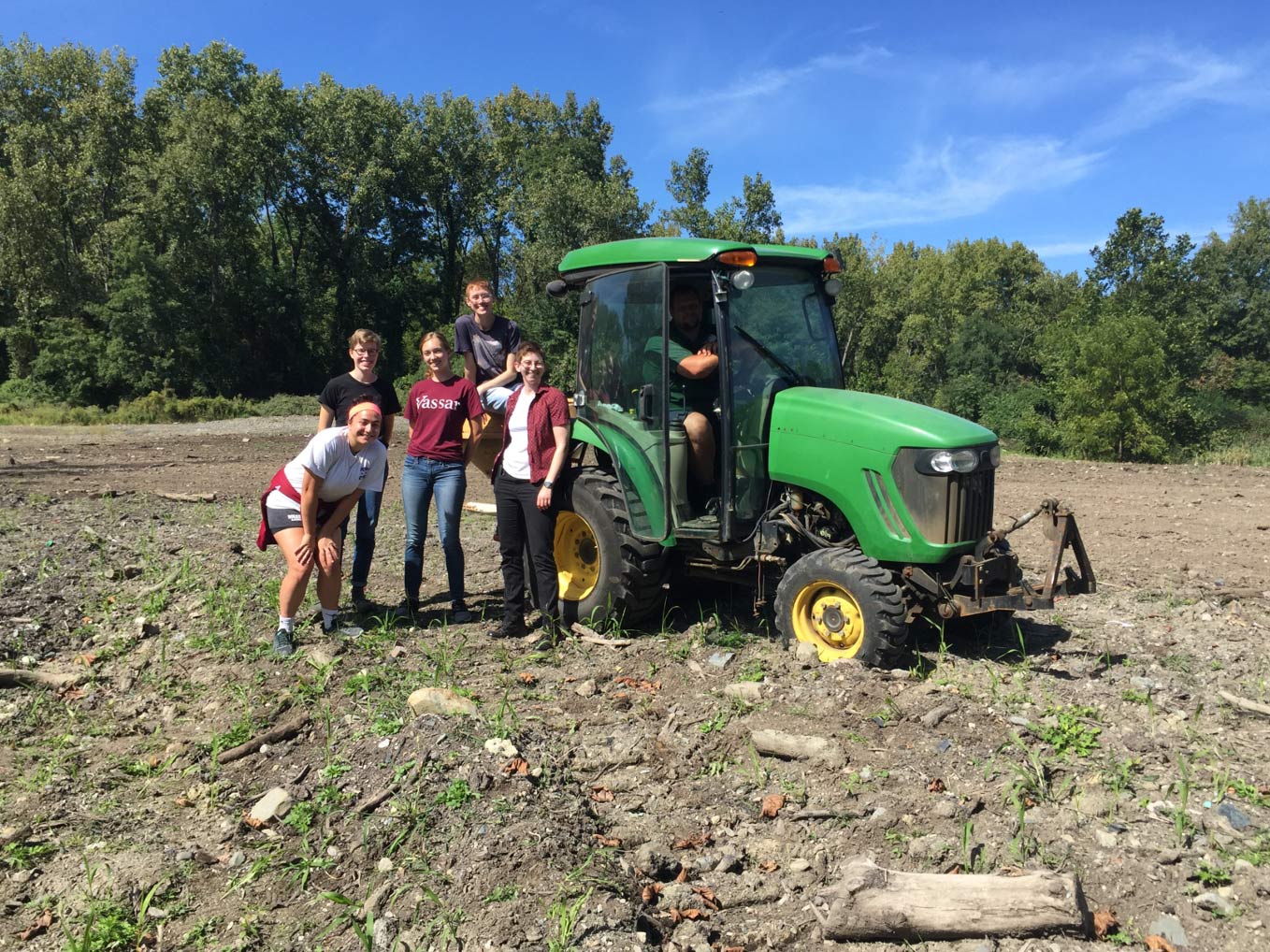Restoration on the Preserve

Professor Meg Ronsheim
EcoRestore Site
Formerly used as a staging site for campus building projects and as a composting facility, initial plans for the restoration of the EcoRestore site were developed as a class project in the fall of 2015. In 2019, the natural contour of the land was restored and Prof. Ronsheim and Preserve Director Keri VanCamp began a collaborative project, working together with students to develop the following restoration and management goals for the site:
- Self-sustaining populations of primarily native species that are connected via movement of genes and organisms to neighboring areas
- Structural diversity present within the vegetation communities and across trophic levels
- Provides ecosystem services including cleaner water, carbon sequestration, pollinator habitat, and oxygen production to support public health and stronger human-nature connections
Examples of student projects at the EcoRestore site include developing and implementing plans to seed the site with native grassland species, creating three vernal pools for amphibians, obtaining grant funding to plant over 700 trees and shrubs, establishing a wildlife monitoring program via camera trapping, collecting baseline data for long-term tracking and assessment of plant communities, developing a strategy to improve soil quality, conducting a study of community use, and developing a management plan for vine-invaded edges.
Restoring Community Connections
Building on the success of the EcoRestore site, Prof. Ronsheim, Preserve Director Keri VanCamp and Environmental Cooperative Director Jen Rubbo are starting a new collaborative project to restore a wooded area adjacent to The Barn at the north end of the Preserve. Student projects will focus on maintaining and improving overall ecosystem resilience, restoring native plant communities, and increasing community engagement. Possible projects include propagating and planting native plants, developing an educational trail by the Barn, management of invasive species to protect vulnerable areas, developing plans to increase carbon sequestration on the Preserve, and creating outreach materials for community members, among others